Doctor Who‘s Cybermen have taken many forms over the years, both in terms of their design and their apparent ‘personalities.’ Here’s a potted history of the monsters’ fascinating evolution…
When the Cybermen first appeared in the Whoniverse, they were cloth-covered humanoids with machine parts augmented into their bodies, and (for some reason) huge lamps on their heads, held in place by two ‘handlebars.’ This was in William Hartnell’s last story, ‘The Tenth Planet,’ and the premise was simple; the Cybermen were once humanoid, and from the planet Mondas. Over time, they replaced their various body parts with cyber components until they became almost entirely machine. This included the removal of supposed ‘vulnerabilities’ such as emotions, culminating in what the Mondasians considered to be a superior species.
Their voices, meanwhile, sounded semi-human, but they spoke in a rhythmic, alternating pitch that sounded (somewhat) like singing. Interestingly, this version of the Cybermen’s voice only lasted for ‘The Tenth Planet’ before the production team opted for something that sounded altogether more monotone and machine-like. The drawback of this particular voice, though, was that some of the dialogue was less discernible, so you might have to turn on the subtitles if you ever attempt their next story ‘The Moonbase,’ or ‘The Tomb of the Cybermen‘ from Season Five.
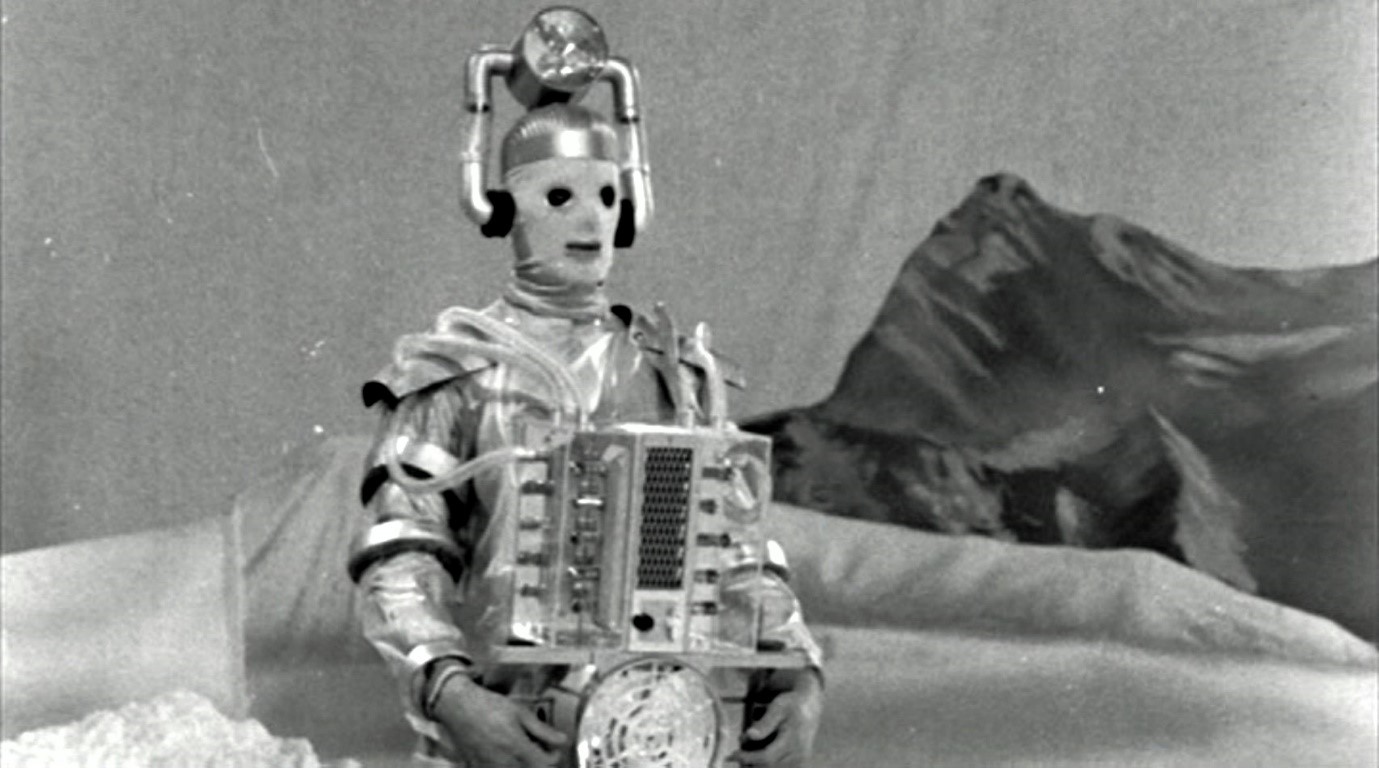
And the change of voice also brought with it a change of costume. For the remainder of the 60s, the Cyber suits comprised metallic heads, and smaller ‘handle bars’ on their helmets. Their bodies, meanwhile, were rubber jumpsuits which had been sprayed silver, with various pieces of piping worked into the material.
Perhaps the most memorable feature of this design is the ‘letterbox flap’ which represented the mouth, and this opened and closed for each line of dialogue. This had been replaced with a simple hole by the time ‘The Wheel in Space’ aired, whilst the voices continued to vary; they were deeper and croakier for ‘The Wheel in Space,’ and somewhat higher-pitched for 1968’s ‘The Invasion,’ by which time the rubber jumpsuits had also changed into something akin to sprayed scuba divers’ outfits.
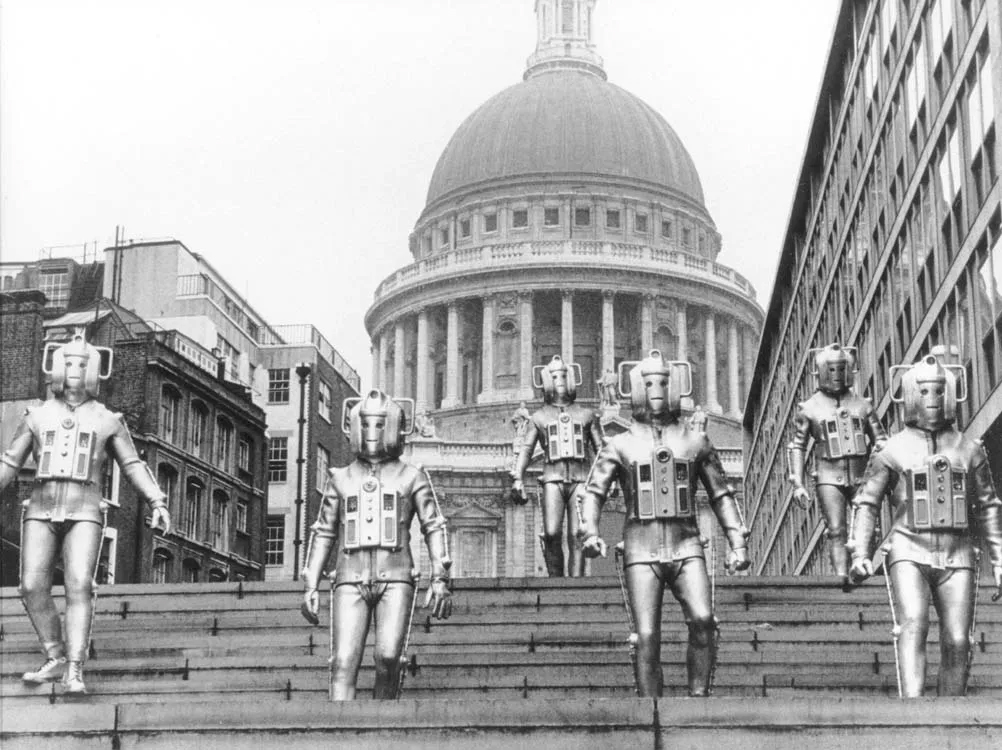
These Cybermen costumes were repurposed and subtley upgraded for 1975’s ‘Revenge of the Cybermen,’ but in this adventure the monsters had undergone something of a personality transplant – if such a thing is possible for Cybermen. In fact, to say that the metal giants had distinct personalities in this adventure is no exaggeration; these Cybermen, whilst still robotic in nature, had developed a taste for sarcasm and spoke with rather unique transatlantic accents.
The reason for this shift isn’t clear. It may be that the production team wanted to move things forward. Or it may be that, given it had been some seven years since the Cybermen’s last appearance, the team weren’t entirely sure how the monsters should act or speak.
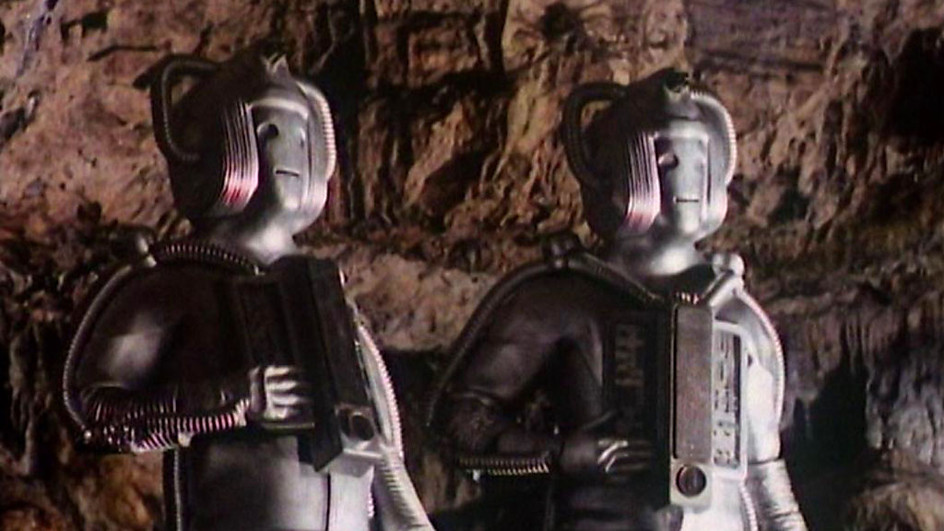
This ‘personality transplant’ continued when John Nathan-Turner took over as producer, as the Cybermen burst back onto our screens in 1982 after another long break. They continued to be dry and somewhat sardonic, with David Banks’ Cyber Leader frequently declaring things as “excellent!” whilst clenching his fist with almost pantomimic relish.
That being said, there’s nothing pantomimic about the 1982 story ‘Earthshock’ which does exactly what it says on the tin, and is possibly the darkest Doctor Who story featuring the Cybermen in the classic era.
What is interesting to note is that, between 1974 and 1988, the Cybermen were sometimes depicted as being rather ‘thick,’ for want of a better word, and were occasionally the butt of jokes. For example, there is the famous scene in ‘The Five Doctors‘ where they are tricked onto a booby-trapped floor by the Master, whilst in ‘Silver Nemesis’ there’s a moment where they discuss “the human condition called ‘madness'” as the Lady Peinforte runs around screaming.
But when they finally returned in New Who, the production team went for a complete reset. For ‘Rise of the Cybermen’ and ‘The Age of Steel,’ the monsters were redesigned. They were clad in robust metal shells and had helmets that were somewhat reminiscent of the ones from the Troughton era. The voices, too, had echoes of the Cybermen of the 60s and, as was the case with their earlier counterparts, their dialogue wasn’t always the most intelligible.
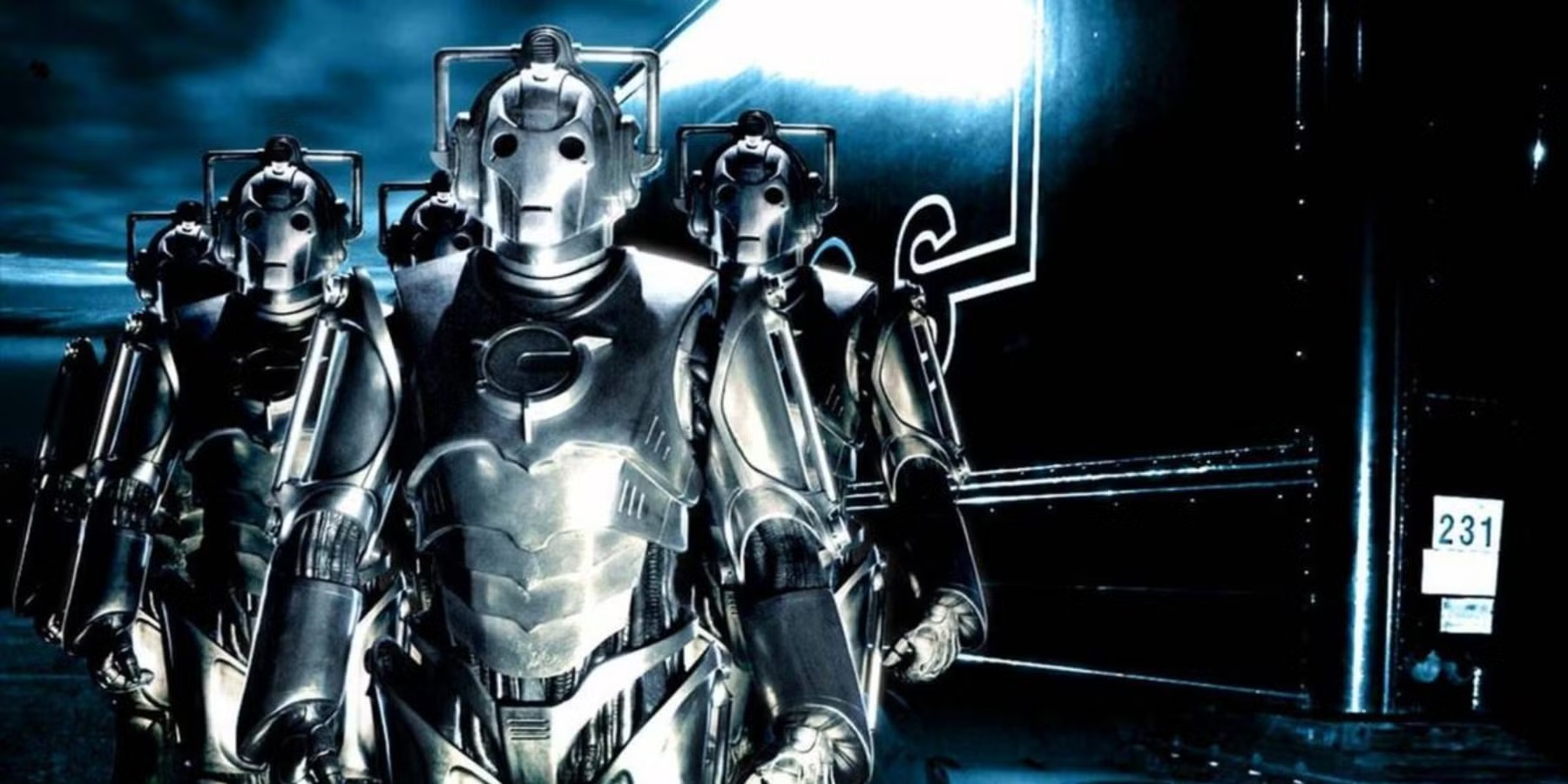
These Cybermen, however, were from a parallel universe. The production team wanted to do an origin story that took place on an alternate Earth, and showed how the Cybermen were in fact the brainchild of a mad scientist called John Lumic, who created the species as a ‘solution’ to perceived human weaknesses. He then began a programme of enforced ‘upgrading’ for the human race, possessing humans via his bespoke ear pods and marching them straight into his Cyber conversion factories.
And these Cybermen actually lingered in the Whoniverse for a while, and it wasn’t until 2010’s ‘The Panodrica Opens’ that we actually got to see the ‘real’ Cybermen again, albeit with the same design. This design did evolve, though, and the monsters’ appearance was streamlined for the 2013 story ‘Nightmare in Silver’; these Cybermen were slimmer and had echoes of the Raston Warrior Robot costume from ‘The Five Doctors.’ Their voices, too, reverted to the deeper, croakier tones of 1968’s ‘The Wheel in Space.’
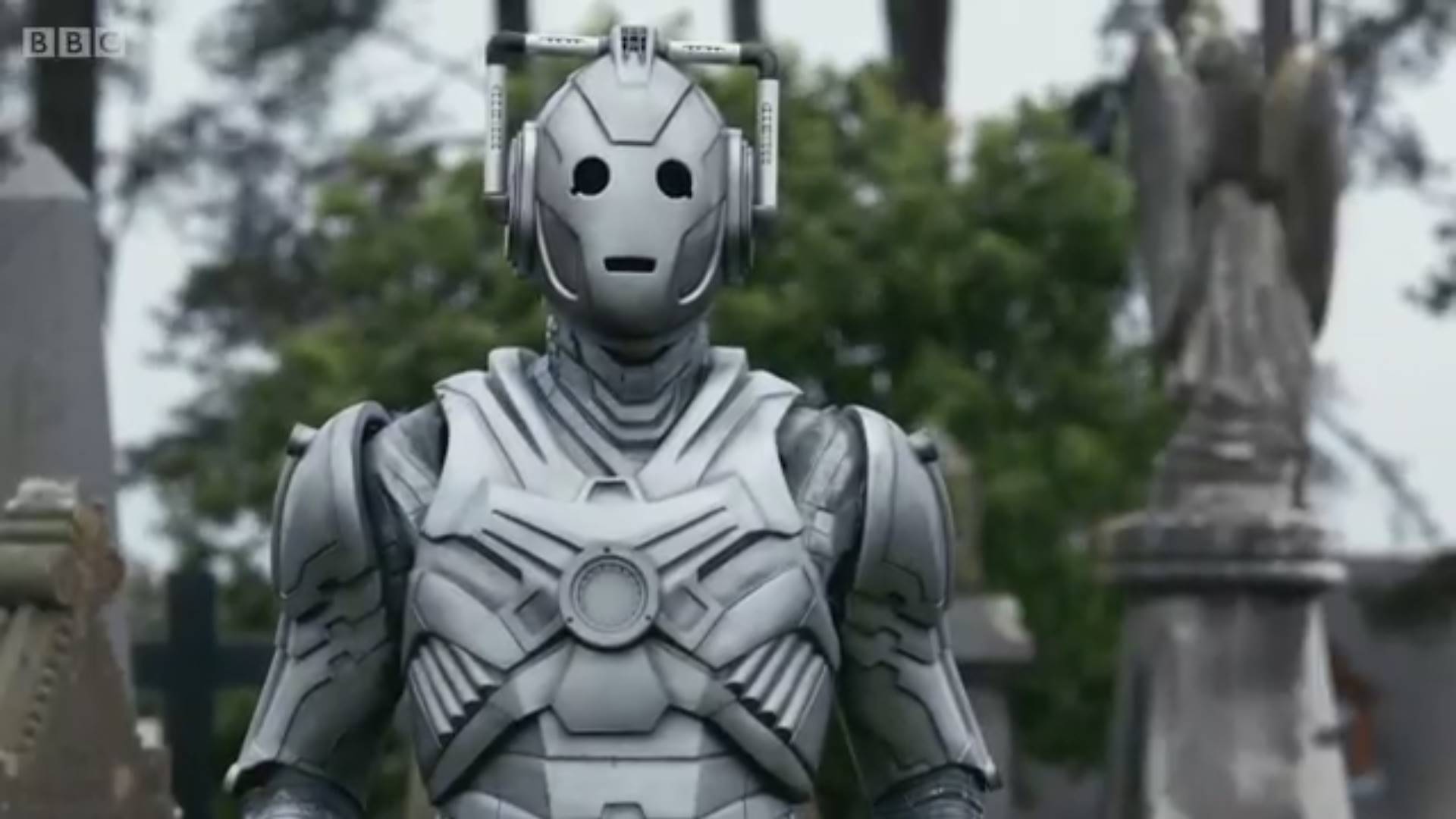
The most interesting development was in 2017, when the production team made the unusual – and exciting – decision to bring back the Mondasian Cybermen from ‘The Tenth Planet,’ complete with the melodic voices and cloth-like faces. These weren’t redesigns, but direct copies; ‘World Enough and Time’ actually explored how the original Cyber race came to be. Indeed, the Master (who also featured in this story) even referred to the event as “the genesis of the Cybermen.”
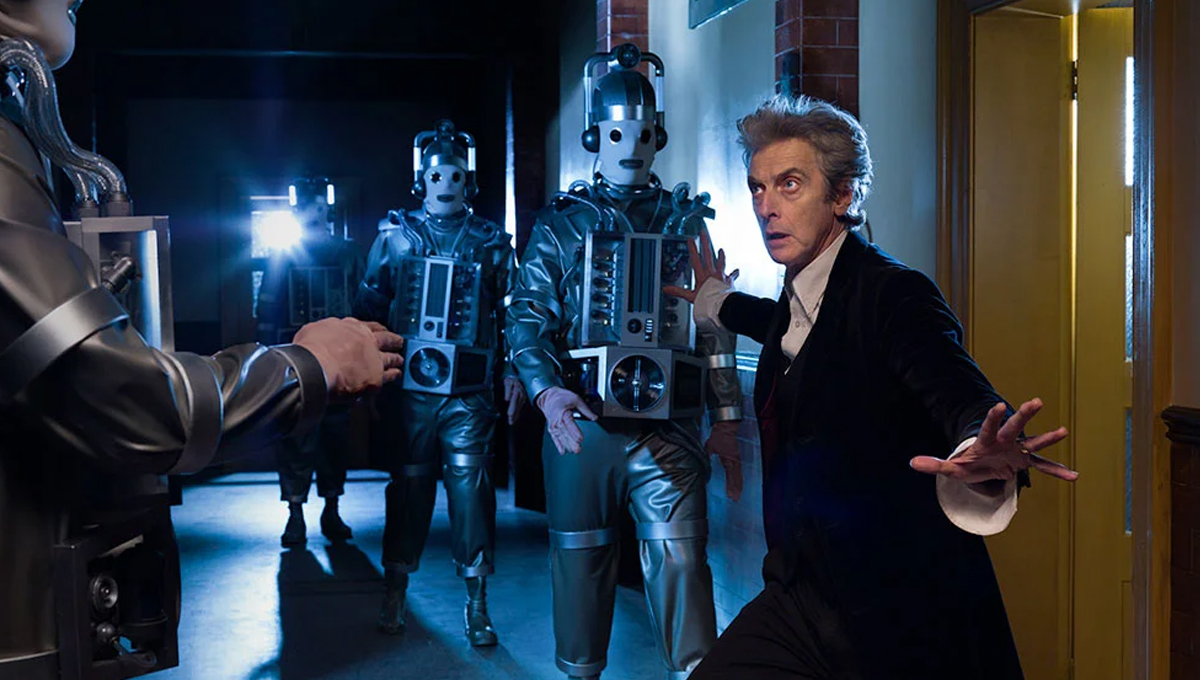
And, surprisingly, these designs stood up incredibly well, and didn’t look as ‘out of place’ as you might expect. In fact, they were quite sinister; ‘World Enough and Time’ and ‘The Doctor Falls’ are bleak, unnerving episodes, and it is genuinely terrifying to see (spoiler alert) the Doctor’s companion Bill undergo Cyber conversion – a conversion from which she never really recovers. And, for the first time in Doctor Who‘s history, the Cybermen actually cost the Doctor his life.
So do tell us, reader – which is your favourite Cybermen design? And what would you like to see from the Cybermen in the future? Let us know in the comments below.










The second generation of Cybermen were neat, good head style, although the fourth generation got the body style right (an upgraded version) can’t really beat that look as it has to be a menacing look and the voice has to be deep, monotonous, the “excellent” addition is actually quite good. This is really the style that works and becomes more believable.
The Cybermen from The Flood would be acheivable with modern CGI.
My favorite cyberman design was the Earthshock version. I would like that to come back and have Adric return with them because he did NOT die in that episode but was “saved” by the cyberman and used to help them or maybe “reform” them somewhat. Or at least a faction of cyberman rebels so to speak who want to coexist with humans not absorb them.